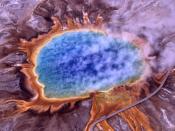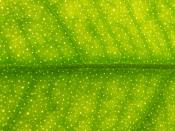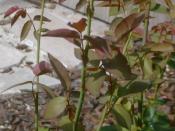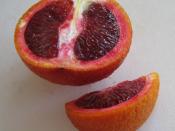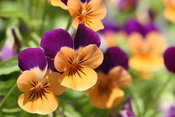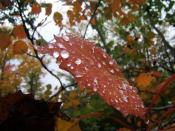If leaves did not change colors in the fall they might be badly damaged, lose the tree?s water supply, and my never grow back. Leaves begin to make smaller and smaller amounts of the essentials of life and growth in late summer. Chlorophyll traps the energy of the sun and uses it to make the food the plant needs. You see other colors in the fall because of small amounts of pigment called carotenoids and anthocyanin. Carotenoids are yellow and gold pigments and anthocyanins are the red and crimson pigments. Sunny cool dry weather makes bright colors and when it?s rainy the colors get washed away. In the spring hormones work together to make the leaves grow, in the summer leaf growth hormones slow down, and abscisic acid stops the leaf from growing. The decline in day length in late July and August triggers the leaves to change color. Abscisic acid helps the tree withstand early freezes and low temperatures in winter.
Minerals, carbohydrates, and other nutrients travel from the leaf to be stored in the roots and the body of the tree over the winter. Conifers Survive harsh winters because they have bunches of needle like leaves that only a small surface area is exposed to the harsh winter cold. One myth of why leaves change color is Indians believed that a spirit Indian hunter killed a spirit bear, Ursa Major, and the blood dripped on certain leaves and when the meat was cooked fat splattered on leaves turning them yellow and brown. Anther myth is that Jack Frost was said to be a supernatural artist who colored the leaves. If deciduous trees kept there leaves in the winter they could lose too much water and collect too much snow and have their branches break. The cork cell layer cuts of the flow of water and nutrient to the leaf. There are more then 60 carotenoids found in a leaf. We cannot see the carotenoids in the summer because of the chlorophylls. Leaves must have excess sugar, exposed to clear cool days and chilly nights. When anthocyanin and carotonoids combine the foliage glows with color. The leaves do not have to change color because they are not in use when they change.
